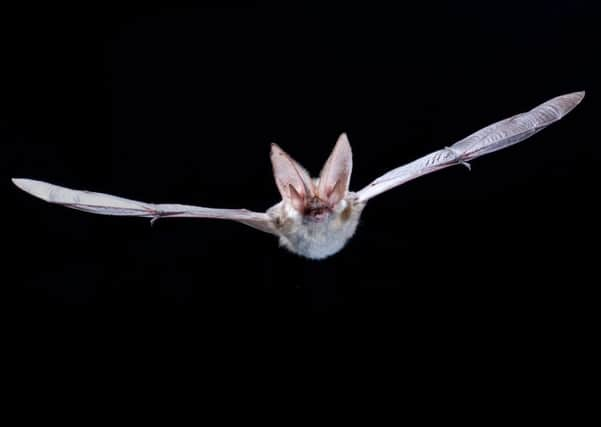Light shed on creature with something of the night about it


When it comes to reputations, it doesn’t take much to turn from hero to villain.
Take bats, which can blame their standing as bloodsucking, vampiric omens of death on Yorkshire. Well, the county did at least contribute to their current image problem.
Advertisement
Hide AdAdvertisement
Hide AdThe bad feeling may have something to do with the hours that bats keep. Along with moths, they have long aroused suspicion simply for being denizens of the dark; they emerge at dusk to carry out their secretive business behind our backs in the gloom.
To make matters worse, bats are associated with the burial places of the dead – they actively seek out churches and graveyards, which offer fantastic roosting locations.
However, it was the publication of Bram Stoker’s gothic horror novel Dracula in 1897 that saw our perception of bats change forever. Inspired by the author’s trips to Whitby, the book did as much damage to the reputation of these tiny mammals as the film Jaws inflicted upon sharks in the 1970s.
Stoker, who had also heard breathless reports of newly discovered blood-sucking bats in South America, linked the animals with the character of shape-shifting vampire Dracula. In the novel he takes the form of a bat to fly and flicker menacingly at the window of an intended victim. From then on, bats were viewed as villainous creatures of the night.
Advertisement
Hide AdAdvertisement
Hide AdHowever, Abi McLoughlin from the Bat Conservation Trust believes we should look beyond ghoulish preconceptions and instead appreciate their nocturnal navigation skills.
She explains: “Bats emerge and feed at dusk – just as the sun goes down. The fact they can see in the dark, where humans fear to tread may be responsible for their spooky reputation. In addition to their rather good eyesight, bats use sound to map their surroundings and help find prey in the gloom of evening, using echoes to the calls they make to build up a sound picture.
“There is definitely something of the night about them but that’s not necessarily a bad thing. They scoop up insects that are active at dusk and perform spectacular pest control – one bat can munch 3,000 midges a night.”
However, British bats have more pressing concerns than a little bad publicity. There are 17 resident breeding species in the UK and many have suffered long-term declines as key habitats and roosting sites disappear.
Advertisement
Hide AdAdvertisement
Hide Ad“There are a number of factors ranging from loss and fragmentation of habitat, diminished food supply, as well as the destruction of roosts and disease,” says Ms McLoughlin. “In the UK, bat populations have declined considerably over the last century and the threat from building and development work, which affects roosts, remains.
“Many bat species are extremely vulnerable to the activities of humans and if they are disturbed at a particularly sensitive time of year, like during hibernation in winter or in the summer when baby bats are born, it can have hugely detrimental impacts on local bat populations.
“The decrease in bat numbers mirrors the ever-changing countryside. Natural habitats such as hedgerows, woodlands and ponds have been declining and fragmenting.
“This along with the use of pesticides and intensive farming practices have lead to a reduction in the number of insects which the bats rely on as their only food source. The change from haymaking to silage, for example, has meant that many insects do not reach adulthood, so there are less flying adults available for bats to prey on.”
Advertisement
Hide AdAdvertisement
Hide AdAnd there could yet be an even bigger threat. White-nose syndrome has been associated with the deaths of between 5.7 million and 6.7 million bats across America and Canada. The fungus has also been identified in Swiss, German, French and Hungarian bat populations.
Until this summer, the fungus had not been seen in bats over here, but this summer it was identified in the South East. While successfully isolated, the Bat Conservation Trust is working to raise awareness of the condition to ensure they can respond to cases quickly.
Bats aren’t the only creatures with an unfortunate reputation of who can trace the seeds of their dishonour back to Yorkshire. Look closely at the upper wing of the Mother Shipton moth and the hook-nosed face of Knaresborough’s cave-dwelling prophetess stares back.
Sinister? No. Spooky? Possibly. But either way, creatures of the night are more fascinating than frightening.
For more information visit www.bats.org.uk